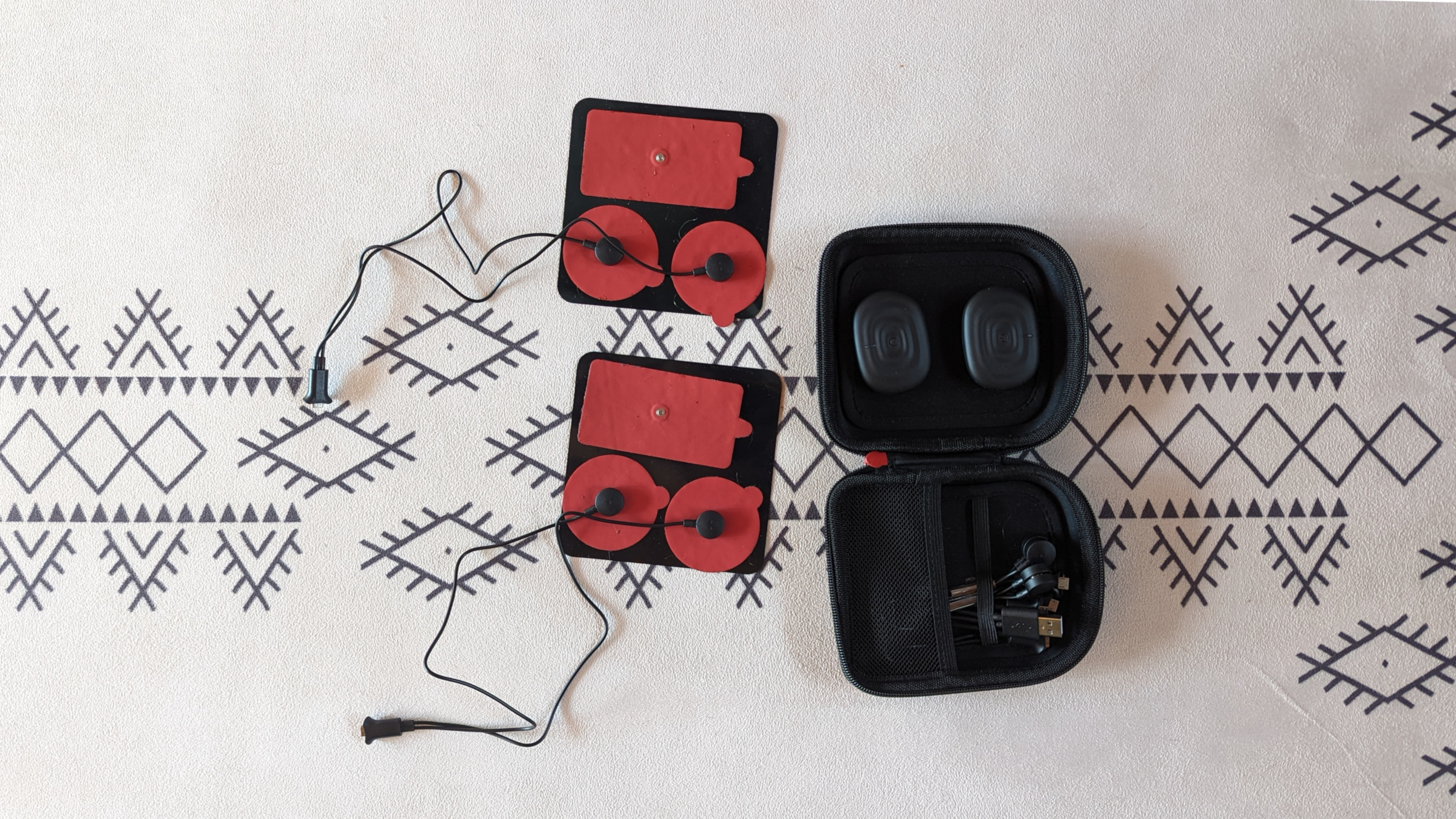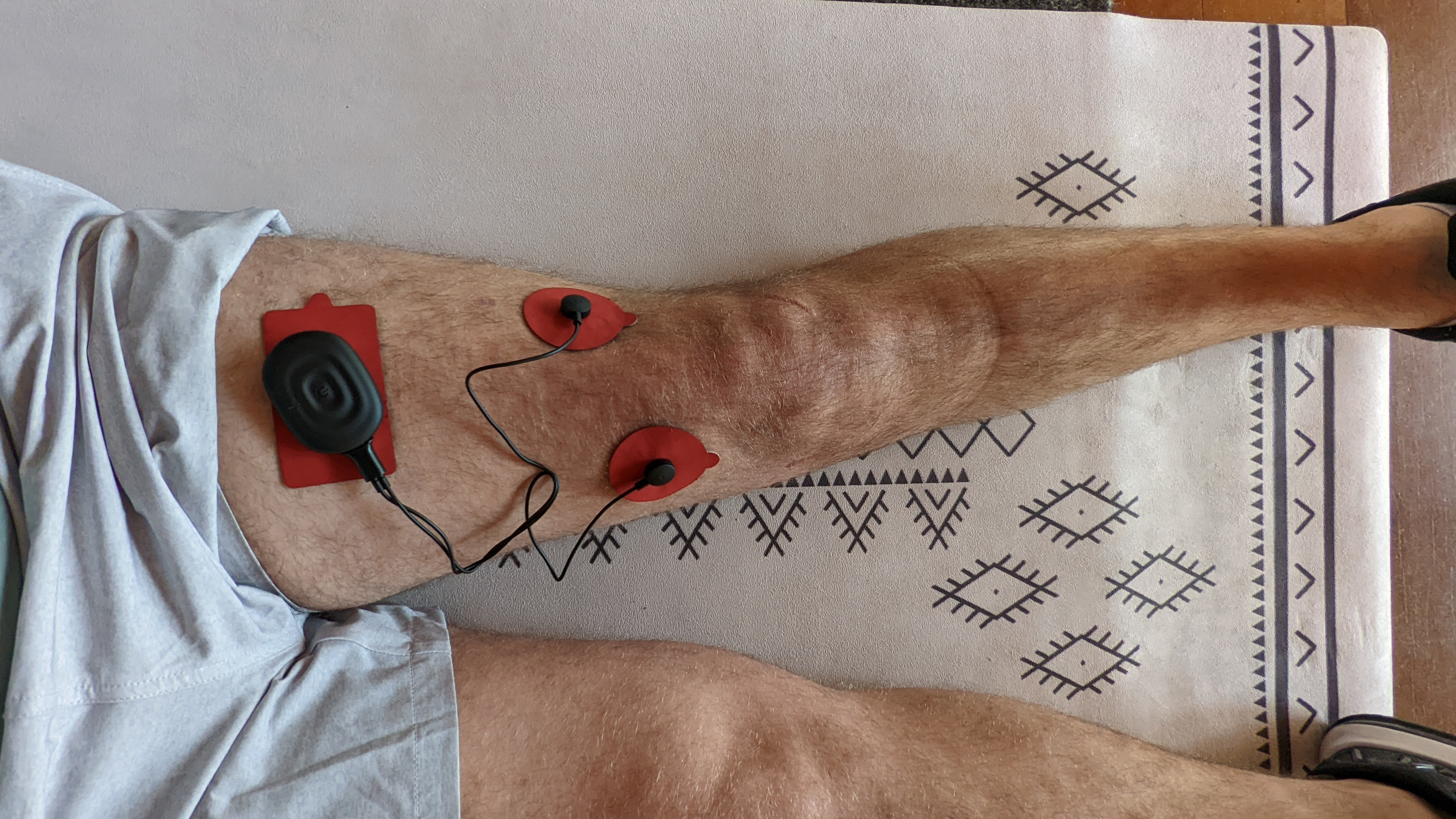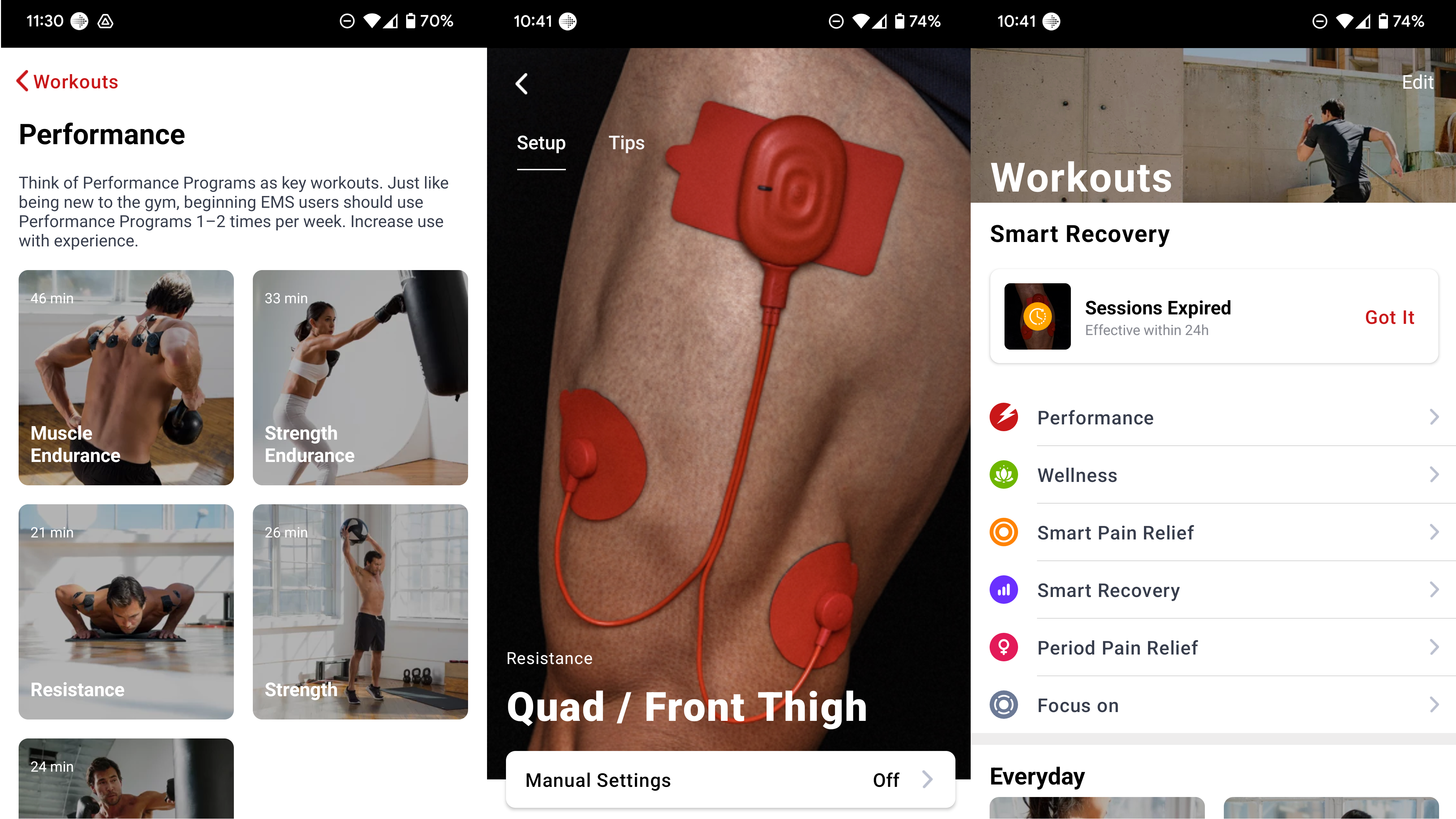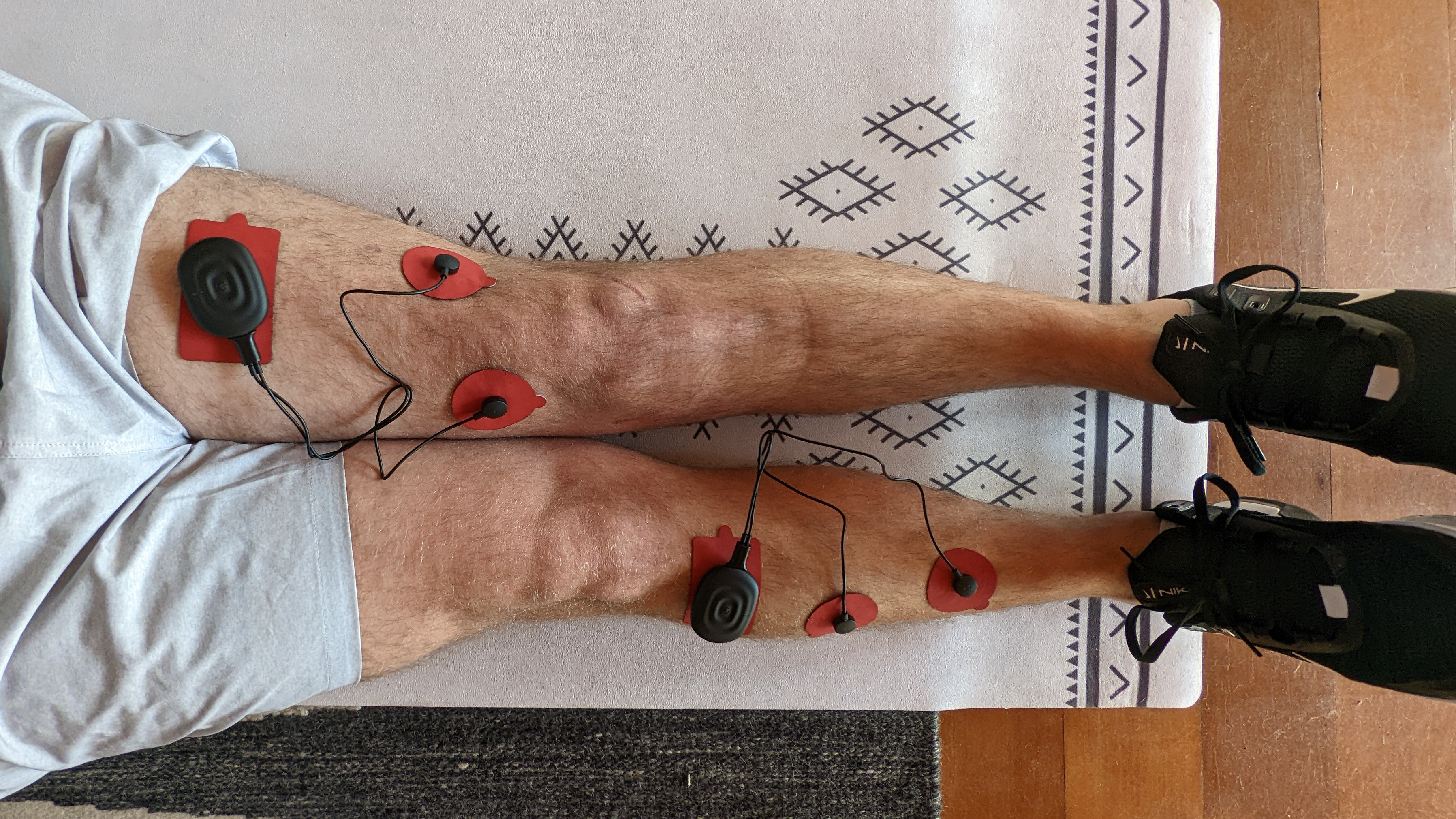I used the Therabody PowerDot 2.0 Duo for a knee injury, but it’s great for everyday workout recovery too
Electrical stimulation is one of the most scientifically demonstrated muscle strengthening and pain management tools around.


The PowerDot 2.0 is a compact NMES and TENS machine that can dramatically reduce injury recovery time and has the potential to boost your daily workout results too.
-
+
Faster recovery from serious injury
-
+
Faster recovery from RSIs
-
+
Boosts training productivity
-
+
Manages period or chronic pains
-
-
Takes time to understand utilisation
-
-
Expensive for general use
Why you can trust T3
After breaking my leg in a surfing accident this year, I was looking at a pretty daunting 12-month recovery period before my surgeon said I'd be able to really send-it in the water again. This makes me a prime candidate for Therabody’s 2021 addition to its recovery-device quiver: the Powerdot 2.0.
The Powerdot 2.0 is a compact set of muscle stimulation pads that connect to an app on your smartphone to activate targeted muscle groups for a number of health benefits. This smart muscle stimulator has three fundamental applications, injury rehabilitation, pain relief and athletic performance maximisation.
Naturally, I was most interested in reducing the time it took me to get back to sport, but after using it for a few months, it’s clear to see the benefits of using it following general workouts too.
The PowerDot 2.0 has one other neat trick up its sleeve: it has the capacity to function as a TENS machine as well for anyone suffering from arthritis, period pain or other discomforts from soft tissue and joint injuries.
All up it’s a pretty impressive unit that could be the key to you reaching new levels in your training and performance.
Therabody PowerDot 2.0 Review: Price and Availability
The PowerDot 2.0 is available directly from the online Therabody store from $199 / £175 / AU$289 for a single device, but you can also buy the smart muscle stimulators in pairs for $349 / £325 / AU$499.
The single device is a great entry point if you're focusing on injury recovery, but for anyone wanting to use the devices for general training, it’s much more efficient to have one for each leg or arm.
Get all the latest news, reviews, deals and buying guides on gorgeous tech, home and active products from the T3 experts
In addition to the PowerDot 2.0’s electrodes, you will also have to buy pads to attach them to your body. Both the Uno and Duo packages come with 2 large pads and 4 small pads, which will be enough to get you going, but the stickiness of these will wear off after around 20-30 uses, so you’ll have to buy the $18 / £15 / AU$25 replacement pads every couple of months if you're training 2 or 3 times a week.
The last item in the package are a pair of short and long cables for each PowerDot, and a neat little travel case that folds away for easy storage and transportation.

Therabody PowerDot 2.0 Review: How does it work?
The PowerDot 2.0 takes two widely used technologies – transcutaneous electrical nerve stimulation (TENS) and neuromuscular electrical stimulation (NMES) – and shrinks them into a package that anyone can use to reduce pain or boost workout results.
NMES muscle stimulation uses electrical impulses to contract muscles, mimicking what they do when you activate them. With a full 8-week non-weight-bearing period on the agenda, I was able to use this to stimulate muscles in my injured leg to prevent them from atrophying at the rate they would have if I was simply not using them. This meant that when I did begin training my injured leg again, I was perhaps weeks ahead of where I would have been without this device.
While injury recovery is obviously a very specific use case, the device can be used in a similar way to activate muscles and increase circulation on long-haul flights and it’s also an excellent training enhancement and recovery device. After the initial non-weight bearing period there was a lot more work to do to regain all the muscle mass I lost in my injured leg, and this is where the device really shines.

Therabody PowerDot 2.0 Review: How to use it
The PowerDot 2.0 connects to your Android or iOS smartphone and provides a wide range of options for how and when to use electrical stimulation. The most obvious is the Performance mode that is used during, before or after a set of exercises, but there’s also Pain Relief, Recovery and General Wellness categories that will provide slightly different patterns of stimulation at different times.
There is a lot of research and development that has gone into creating the workout routines, so even after months of use you’ll still find new ways to make the most of the device. But despite the complexity, the interface is intuitive enough to be easily navigated by first-time users. Apart from picking what purpose you want to use the stimulation for, you also select a muscle group you intend to use it with. The app has clear images of how to position the electrodes and instructions on when to use the program.
Once you are up and running, you can change the intensity of stimulation to match your threshold and, while it’s kept really streamlined, you can individually tweak channels and change the intensity of devices once you’re more confident.

Therabody PowerDot 2.0 Review: Recovery performance
The effectiveness of NMES in injury recovery is undisputed with numerous studies indicating that it is excellent for mitigating muscle atrophy and that it can provide significant benefits when used in conjunction with a physiotherapy rehabilitation program. Anecdotally, I found I was reaching rehabilitation milestones well before the routine timeframes, and there’s enough evidence for the benefits of NMES use with similar injuries that I have no reason to doubt its effectiveness.
The potential usefulness of the PowerDot 2.0 and other NMES devices in general training is a little less obvious, but a lot of athletes have reported that it has been helpful in pushing them through performance barriers that they may not have otherwise broken. There’s also sense in the theory that it helps to build muscle volume by activating parts of muscles you might otherwise miss in your exercise regime.
Because of its TENS pain-management capabilities it’s also an effective tool for mitigating period pain, and it’s even able to help with many other soft tissue injuries you may incur down the track.

Therabody PowerDot 2.0 Review: Verdict
The device is actually surprisingly versatile and is able to deliver meaningful performance gains that are backed up by scientific research (something that the consumer medical device space doesn’t often offer). The device comes in a super compact package that is easily transportable and the app is easy to navigate without losing functionality.
The PowerDot 2.0 is a unique training aid that is surprisingly beneficial for anyone recovering from a major injury, but even as a general-use recovery and pain management tool, this compact product offers a lot of bang for your buck. We’d say it’s a necessary component to anyone serious about getting the most out of their training or for those prone to injury.
Therabody PowerDot 2.0 review: Also consider
Foam rollers are the cheapest option when it comes to active recovery tools. Cheap they might be, foam rollers are super effective in rolling out muscle knots and easing stiffness, especially in the lower limbs and the back. A growing range of studies show foam rolling can have multiple benefits for your sporting performance. They won't help stimulate muscles, though, like the PowerDot 2.0 Duo.